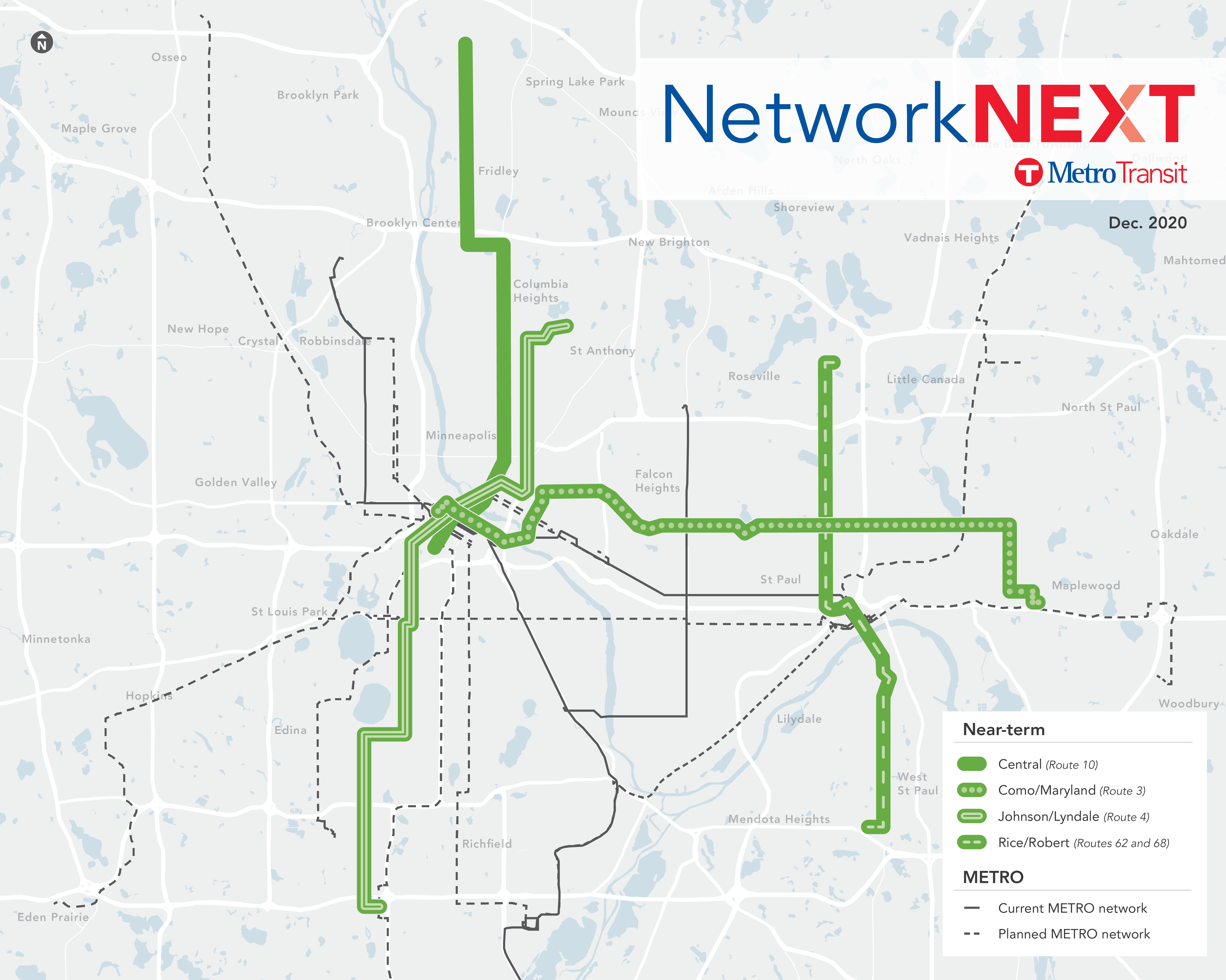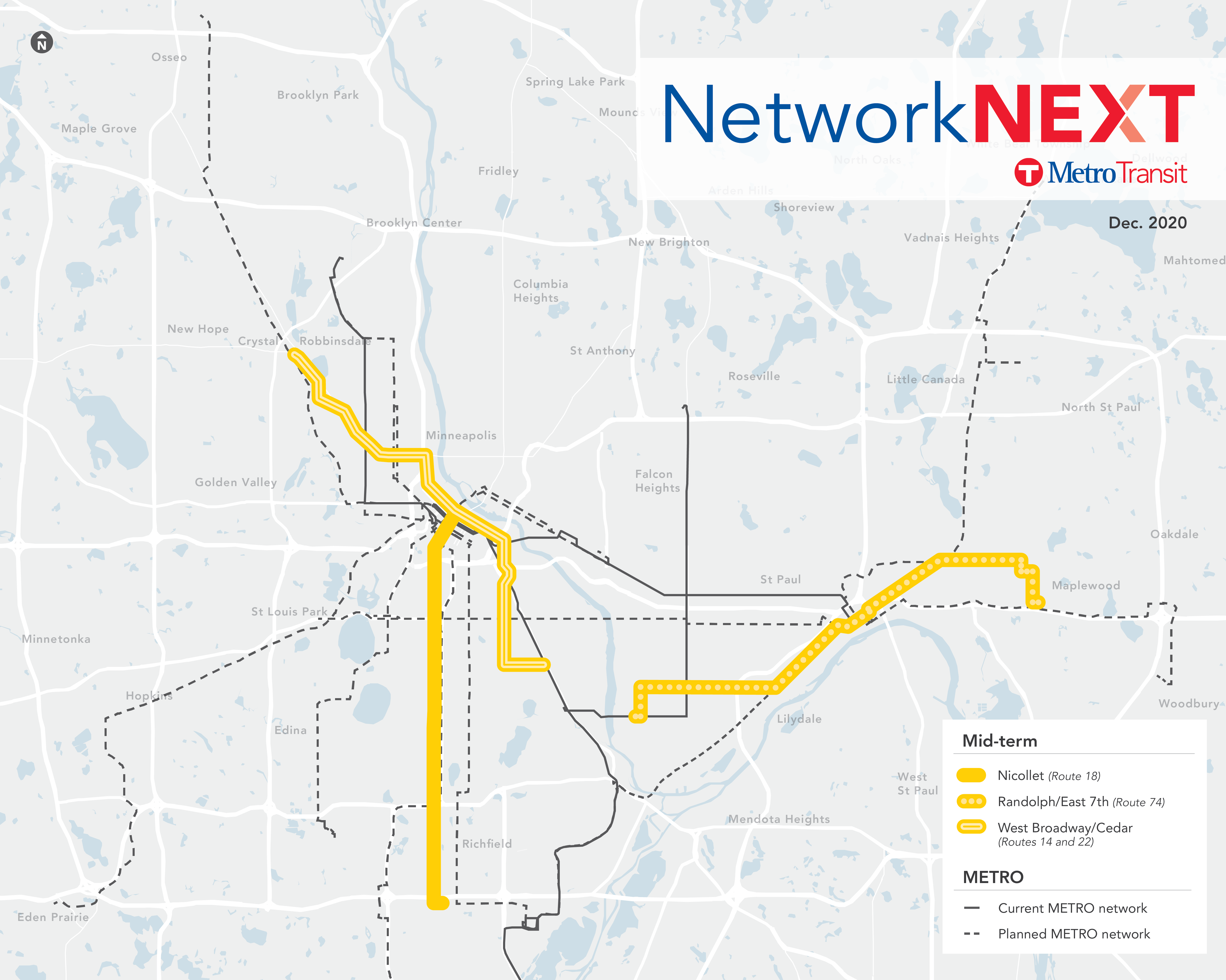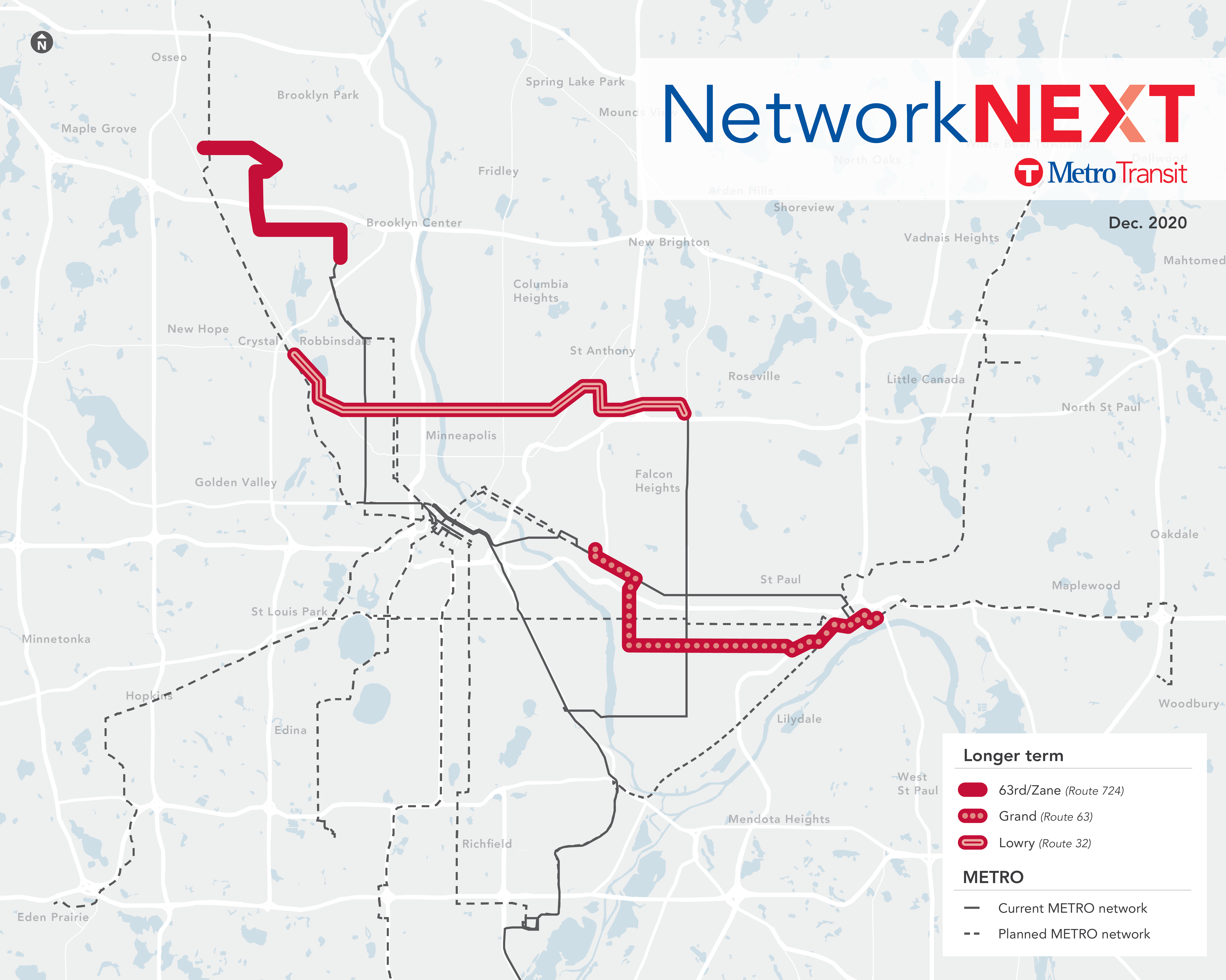Evaluating BRT Corridors
In September and October 2020 we engaged transit customers and the community to identify their top corridor priorities and asked for feedback how these principles should be weighted when evaluating corridors:
-
Advance equity and reduce regional racial disparities: Transit can reduce disparities by improving connections to jobs and opportunities for low-income populations and people of color.
-
Build on success to grow ridership: The number of trips taken on transit and the number of people using transit is a good measure of the transit system’s usefulness and how well it serves riders.
-
Design a network that supports a transit-oriented lifestyle: A transit system can allow people to get to work, education, entertainment, services, and friends and family without owning a personal vehicle.
-
Ensure the long-term sustainable growth of the bus network: Growing the BRT network in places that support frequent bus service today will help ensure that these corridors can be served with fast, frequent, and reliable service in the long term.
Nearly half of the respondents ranked advancing equity considerations as their top priority. See a summary report and presentation of the September engagement process.
This fall, we developed concept plans to estimate costs, ridership, and other benefits; and, evaluated and weighted corridors based on public feedback and principles. Based on the outcome of that process, we’ve prioritized them into three tiers for near-term, mid-term, and longer-term implementation.
Watch this short video for more information about the process.
In December and January we asked the public to help us identify the F, G and H Lines from the corridors identified for near-term implementation. The survey closed on Jan. 20. A summary of what we heard will be posted in late February.
Corridors assigned to tiers
Near term
Based on technical evaluation, feedback from the public, and other corridor readiness factors, these corridors have been identified as the highest priority for implementation. The METRO F, G, and H lines will be selected from these four corridors identified to be implemented in the near term. The corridor identified as the F Line will be implemented first, planned for construction in 2024-2025 (pending full funding), followed by the G and H lines.
-
Central (Route 10) running from downtown Minneapolis to Northtown Mall via Central Avenue
-
Como (Route 3) running from downtown Minneapolis to Maplewood via Como Avenue and Maryland Avenue
-
Johnson/Lyndale (Route 4) running from Bloomington to Columbia Heights via Lyndale Avenue and Johnson Street
-
Rice/Robert (Routes 62 and 68) running from Mendota Heights to Little Canada via Robert and Rice streets

Mid-term
These three corridors have been prioritized for mid-term implementation.
-
Nicollet (Route 18) running from Bloomington to downtown Minneapolis via Nicollet Avenue
-
Randolph/East 7th (Route 74) running between western St. Paul and Maplewood via Randolph Avenue and East 7th Street
-
West Broadway/Cedar (Routes 14 and 22) running from south Minneapolis to Robbinsdale via Cedar Avenue and West Broadway

Longer term
While the three corridors below remain good candidates for BRT implementation, relative to the other corridors studied they have been prioritized for longer-term implementation.
-
63rd/Zane (Route 724) running from Brooklyn Center Transit Center to central Brooklyn Park via 63rd and Zane avenues
-
Grand (Route 63) running from downtown St. Paul to Westgate via Grand Avenue
-
Lowry (Route 32) running from Roseville to Robbinsdale via Lowry Avenue
